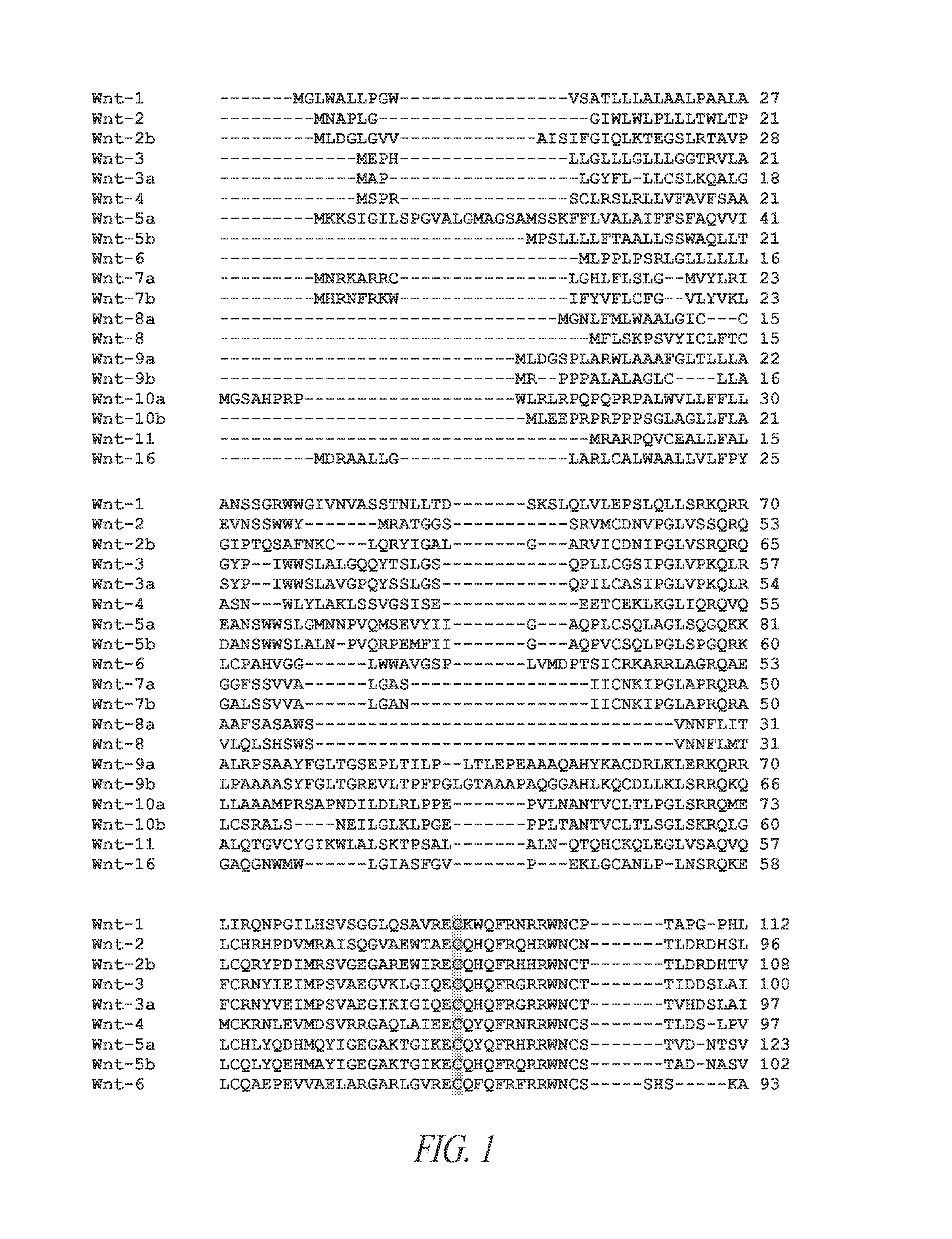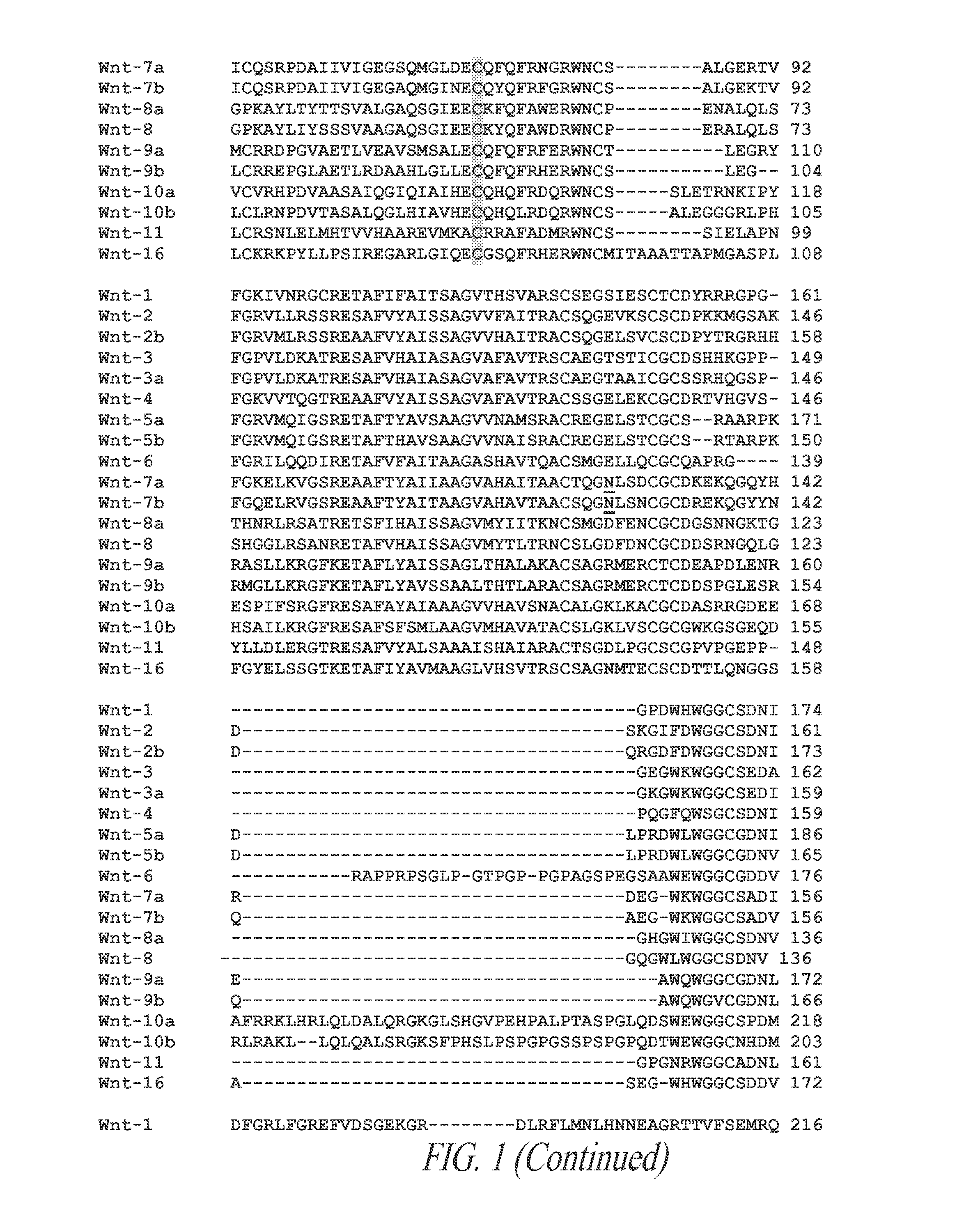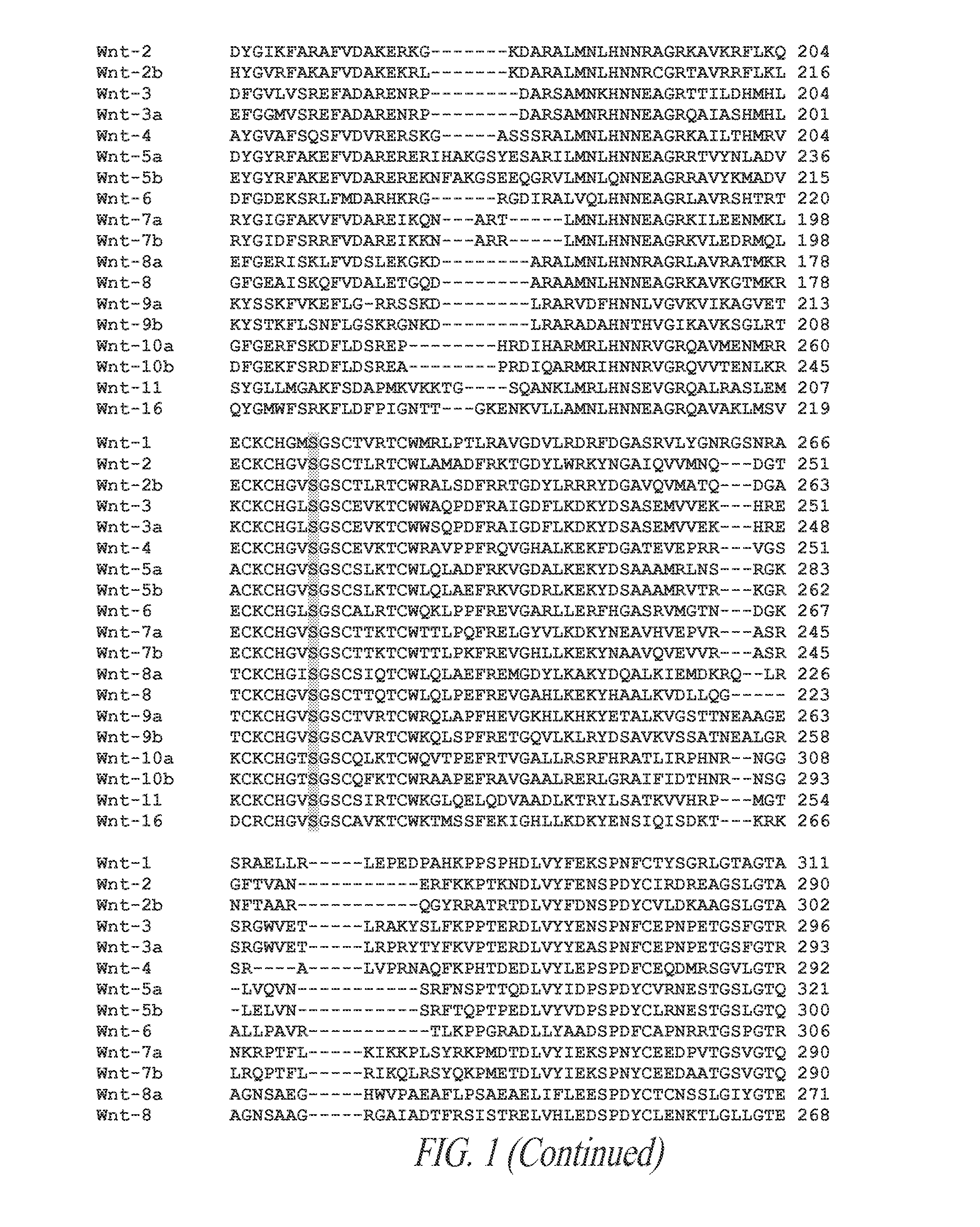Novel wnt compositions and therapeutic uses of such compositions
a composition and composition technology, applied in the field of new wnt compositions and therapeutic methods, can solve the problems that the therapeutic potential of wnts has not yet been fully realized, and achieve the effect of preventing atrophy and promoting muscle hypertrophy
- Summary
- Abstract
- Description
- Claims
- Application Information
AI Technical Summary
Benefits of technology
Problems solved by technology
Method used
Image
Examples
example 1
Wnt Polypeptides have Conserved Sites for Post-Translational Modification
[0249]Wnt proteins are secreted signaling proteins involved in cell survival, proliferation, division and migration. Wnts are required for effective tissue patterning during embryogenesis and tissue regeneration in the adult. Certain Wnt proteins drive skeletal muscle regeneration through stimulation of satellite stem cell symmetric expansion and muscle fiber hypertrophy.
[0250]19 human Wnts have been identified and grouped based of discrete regions of homology. The Wnt proteins have complex post-translational modifications including both glycosylation and lipidation. Protein glycosylation is required for effective protein folding and secretion. FIG. 1 is an alignment of all 19 human Wnt polypeptides. The amino acid residues modified by either glycosylation or lipidation are well conserved (see shaded residues). Further, these same residues are conserved across species as can be seen from the alignment of Wnt7a ...
example 2
Non-Canonical Wnts Induce Myoblast Hypertrophy
[0252]Wnt polypeptides signal via frizzled receptors and co-receptors to stimulate several intracellular pathways. Wnts are generally categorized as either “canonical” or “non-canonical” signaling molecules where canonical signaling results in the nuclear localization of the protein β-Catenin and subsequent expression of target genes. Non-canonical signaling generally includes cellular functions of Wnts that do not directly involve the nuclear localization of β-Catenin, such as the activation of the planar cell polarity (PCP) or Calcium / PLC / PKC pathways. Receptors and coreceptors for canonical and non-canonical pathway activation are different; with the canonical signaling pathway showing dependence for the co-receptor LRP. Wnt7a is a non-canonical signaling molecule and has been shown to drive symmetrical expansion of muscle satellite stem cells via the activation of the PCP pathway (Le Grand et al., Wnt7a activates the planar cell pola...
example 3
Construction and Expression of Modified Wnt7a Polypeptides
[0256]Non-canonical Wnts induce muscle satellite stem cell expansion and muscle hypertrophy. Induction of both processes would be of great benefit therapeutically: for the treatment of cachexia, muscle atrophy, and muscular dystrophy. The use of Wnt as a therapeutic requires effective scaled production, and purification and formulation applicable for therapeutic use while retaining the specific Wnt activity and receptor specificity. The post-translational lipidation of Wnt polypeptides represents a potential complication to these requirements of manufacture. Wnts were generally thought to require lipid for effective activity, lipidated proteins are challenging to purify at high concentrations and require the use of detergent formulation for solubility and stability.
[0257]To address these challenges, several variants of Wnt7a were constructed. Specifically, the amino acid residues targeted for post-translational lipidation (Cy...
PUM
| Property | Measurement | Unit |
|---|---|---|
| Solubility (mass) | aaaaa | aaaaa |
Abstract
Description
Claims
Application Information
 Login to View More
Login to View More - R&D
- Intellectual Property
- Life Sciences
- Materials
- Tech Scout
- Unparalleled Data Quality
- Higher Quality Content
- 60% Fewer Hallucinations
Browse by: Latest US Patents, China's latest patents, Technical Efficacy Thesaurus, Application Domain, Technology Topic, Popular Technical Reports.
© 2025 PatSnap. All rights reserved.Legal|Privacy policy|Modern Slavery Act Transparency Statement|Sitemap|About US| Contact US: help@patsnap.com



